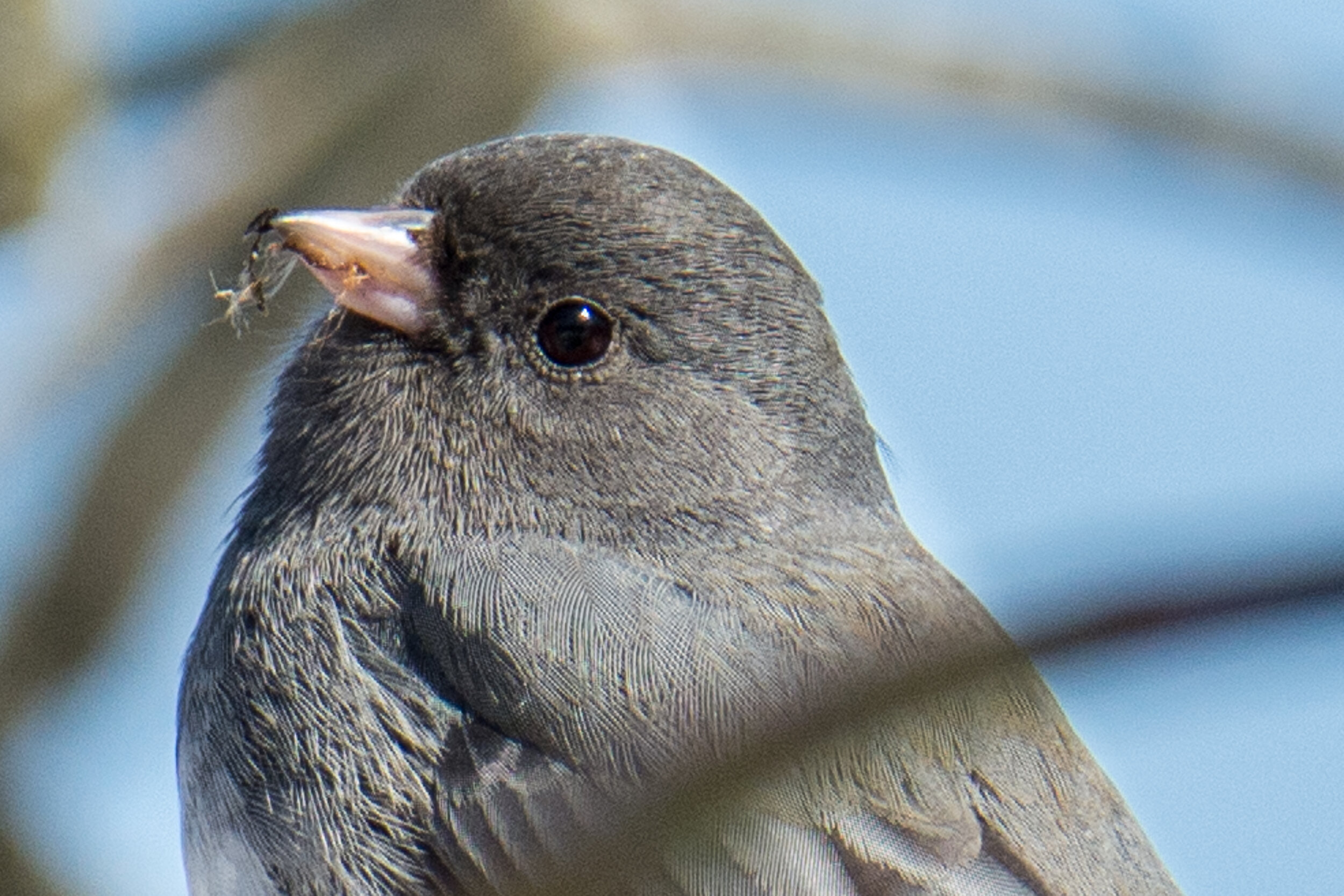Dan's Feathursday Feature: Dark-eyed Junco
A semantics question for you: Is it possible to describe a bird as nondescript? If we call a bird nondescript, doesn’t it by definition cease to be nondescript? Nondescript seems to be a word that just contradicts itself every time we use it to describe something.
Ponder that for a while, as I proceed to describe for you the nondescript Dark-eyed Junco.
After a spring and summer of brightly colored warblers, bright red tanagers, stunning blue Indigo Buntings, and in the midst of the splashy colors of the autumn foliage, I hope the Dark-eyed Junco will forgive me for calling it nondescript. I don’t mean to say that it's not pretty. But it is decidedly plain and gray. Light gray/white below, slightly less light gray on the flanks and wings, and then dark gray on the head and neck, like a gray frozen custard dipped in gray chocolate. (That's six "grays" in the previous two sentences, in case you were counting.)
In certain areas out west the Dark-eyed Junco is tinged with a bit of rusty brown on wings and flank, and is actually quite colorful, but here in the Midwest...mostly gray, and sometimes grey. Occasionally there are brownish juncos as well, but our most common Midwest version is called "slate-colored." Slate sounds a bit more fancy, but just face it, it’s gray.
The gray/gray Dark-eyed Junco is a ground-feeding sparrow that spends its winter with us. During the bleak season, when all the world seems drab and plain and colorless, a passel of nondescript Dark-eyed Juncos is an indescribably refreshing sight. If you happen upon a foraging flock, the ground around you comes to life with velvety gray balls jumping up like popcorn and flitting to nearby trees or shrubs. When they spread their tails to bank or to land, they flash bright white outer tail feathers, defying the gray-pigment gods and leaving no doubt which bird you are seeing.
And as winter begins to loosen its grip and give way to spring, the drab Dark-eyed Junco shows its true colors in another way. Anyone who keeps bird feeders in their yard through the winter knows this bird’s spring call very well. Its warm, high-pitched trill brightens the dead gray surroundings well before any green leaves begin to appear, helping to melt those last icicles that still hang from the eaves, and warming our hearts in ways ineffable.
And then after singing for us that late-winter song of hope, the wonderfully nondescript Dark-eyed Junco will take its leave and journey north to Canada for the summer, where it is no doubt described as quelconque.
Dan's Feathursday Feature is a regular contribution to the COS blog featuring the thoughts, insights and pictures of Chicago birder, Dan Lory on birds of the Chicago region.




